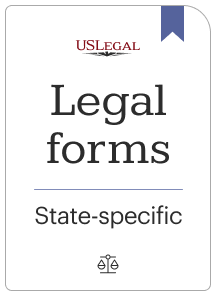

This is a letter of a warning to renter concerning the behavior of the renter's dog. A Letter to Tenant for Inspection is a formal communication issued by the landlord or property manager to inform tenants about an upcoming property inspection. This letter aims to ensure transparency, establish a good landlord-tenant relationship, and outline the expectations during the inspection process. It provides details regarding the purpose, date, time, and any specific guidelines the tenants need to follow during the inspection. Keywords: Letter to tenant for inspection, property inspection, tenants, landlord, property manager, communication, formal, transparency, relationship, expectations, guidelines. Types of Letters to Tenant for Inspection: 1. Move-In Inspection Letter: This type of letter is sent to tenants when they first move into a rental property. It informs them about the initial inspection to document the condition of the property before their occupancy. This letter may also include guidelines on maintenance and care during their tenancy period. 2. Routine Inspection Letter: Landlords or property managers often conduct routine inspections to ensure the property is well-maintained, identify any maintenance issues, or assess compliance with lease terms. The letter for a routine inspection typically provides a notice period, date, and time for the inspection along with any specific instructions for the tenants. 3. Emergency Inspection Letter: In cases of emergencies such as a burst pipe, fire, or gas leak, landlords may need to conduct immediate inspections to assess the situation and carry out necessary repairs. An emergency inspection letter is sent to inform tenants of the inspection's purpose, urgency, and emphasize the need for immediate access to the property. 4. Remove Out Inspection Letter: This letter is usually sent to tenant a few weeks before their lease ends. It informs them about the final inspection to determine any damages or repairs needed to return the property to its original condition. The letter may include guidance on cleaning, rectifying damages, and the implications on their security deposit. 5. Special Inspection Letter: There could be specific scenarios where an inspection is required, such as suspicion of unauthorized pets, illegal activities, or unreported damages. In such cases, landlords or property managers may send a special inspection letter to inform tenants about the need for a thorough investigation. 6. Access for Maintenance or Repairs Inspection Letter: When maintenance or repairs are scheduled in the rental property, a letter is sent to tenants to inform them about the inspection required for addressing the specific issue. This letter includes details about the maintenance schedule and any temporary inconvenience the tenants may face during the inspection. Overall, a Letter to Tenant for Inspection serves as a formal notification outlining the purpose, date, time, and guidelines for a property inspection. It ensures a transparent landlord-tenant relationship and helps maintain a well-maintained property throughout the tenancy.
A Letter to Tenant for Inspection is a formal communication issued by the landlord or property manager to inform tenants about an upcoming property inspection. This letter aims to ensure transparency, establish a good landlord-tenant relationship, and outline the expectations during the inspection process. It provides details regarding the purpose, date, time, and any specific guidelines the tenants need to follow during the inspection. Keywords: Letter to tenant for inspection, property inspection, tenants, landlord, property manager, communication, formal, transparency, relationship, expectations, guidelines. Types of Letters to Tenant for Inspection: 1. Move-In Inspection Letter: This type of letter is sent to tenants when they first move into a rental property. It informs them about the initial inspection to document the condition of the property before their occupancy. This letter may also include guidelines on maintenance and care during their tenancy period. 2. Routine Inspection Letter: Landlords or property managers often conduct routine inspections to ensure the property is well-maintained, identify any maintenance issues, or assess compliance with lease terms. The letter for a routine inspection typically provides a notice period, date, and time for the inspection along with any specific instructions for the tenants. 3. Emergency Inspection Letter: In cases of emergencies such as a burst pipe, fire, or gas leak, landlords may need to conduct immediate inspections to assess the situation and carry out necessary repairs. An emergency inspection letter is sent to inform tenants of the inspection's purpose, urgency, and emphasize the need for immediate access to the property. 4. Remove Out Inspection Letter: This letter is usually sent to tenant a few weeks before their lease ends. It informs them about the final inspection to determine any damages or repairs needed to return the property to its original condition. The letter may include guidance on cleaning, rectifying damages, and the implications on their security deposit. 5. Special Inspection Letter: There could be specific scenarios where an inspection is required, such as suspicion of unauthorized pets, illegal activities, or unreported damages. In such cases, landlords or property managers may send a special inspection letter to inform tenants about the need for a thorough investigation. 6. Access for Maintenance or Repairs Inspection Letter: When maintenance or repairs are scheduled in the rental property, a letter is sent to tenants to inform them about the inspection required for addressing the specific issue. This letter includes details about the maintenance schedule and any temporary inconvenience the tenants may face during the inspection. Overall, a Letter to Tenant for Inspection serves as a formal notification outlining the purpose, date, time, and guidelines for a property inspection. It ensures a transparent landlord-tenant relationship and helps maintain a well-maintained property throughout the tenancy.
Remove the inconvenience that accompanies your legal documentation. Explore the extensive US Legal Forms catalog where you can find legal templates, examine their relevance to your circumstances, and download them immediately.